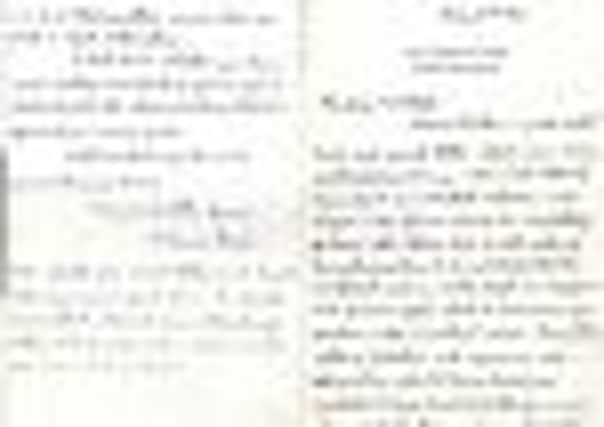Treasure trove from real-life inspiration for Sherlock Holmes


Among the artefacts accumulated by Dr Joseph Bell was a letter from Sir Arthur Conan Doyle confirming that he based his fictional pipe-smoking detective on the medic, who lectured the author when he studied medicine at Edinburgh.
In his letter, Conan Doyle wrote: “It is most certainly to you that I owe Sherlock Holmes.” All Dr Bell’s papers, including his journal, have been handed over to the Surgeon’s Hall Museum, the home of the Royal College of Surgeons of Edinburgh. The donation was made by Judith Stisted, the widow of Joseph Nigel Stisted and a great-grandson of Dr Bell.
Advertisement
Hide AdAdvertisement
Hide AdThe Stisted-Bell Collection includes a photograph of Dr Bell operating on a child and a portrait of the doctor. Yesterday, the college librarian, Marianne Smith, said: “We are thrilled at the generosity of the Stisted family. Mrs Stisted felt that the collection was coming back to its proper home.”


Conan Doyle began his medical studies at Edinburgh University in 1876 before most scientific techniques used for medical diagnosis had been invented and students were taught the power of detailed personal observation of the patient.
Dr Bell, Conan Doyle’s teacher of clinical surgery, had turned such observation into a fine art. In his autobiography, Conan Doyle described an example of this. Without even speaking to a patient, Dr Bell correctly deduced that the man was a non-commissioned officer who had recently been discharged from a Highland Regiment and had been stationed in Barbados.
Dr Bell later explained to his students that he had reached his conclusions from the way the patient wore his hat, his air of authority and his medical complaint, which came from the West Indies.
Fifteen years later, the episode was repeated with a dash of artistic licence in the Sherlock Holmes classic The Adventure of the Greek Interpreter. When looking out of the window of the Diogenes Club in Pall Mall, Holmes and his brother, Mycroft, looked at a man in the street below. They deduced that the fellow is a recently discharged non-commissioned officer from the Royal Artillery, who has recently served in India and was the widowed father of several children.
Holmes further observed that the light colouring on one side of his brow indicated that he wore his hat like a soldier in the Royal Artillery. The fact that he is in “complete mourning” and is doing his own shopping gives away his widower status. The rattle he was carrying along with a picture book showed that there were at least two children of differing ages.
The similarity of the two episodes underlines Dr Bell’s influence on the budding author and it was Conan Doyle’s tutor’s attention to detail that was to become the hallmark of Holmes’s famous powers of deduction.
The collection forms part of an exhibition at Surgeons’ Hall Museum and following the gift a special Conan Doyle Day is being planned for the New Year.